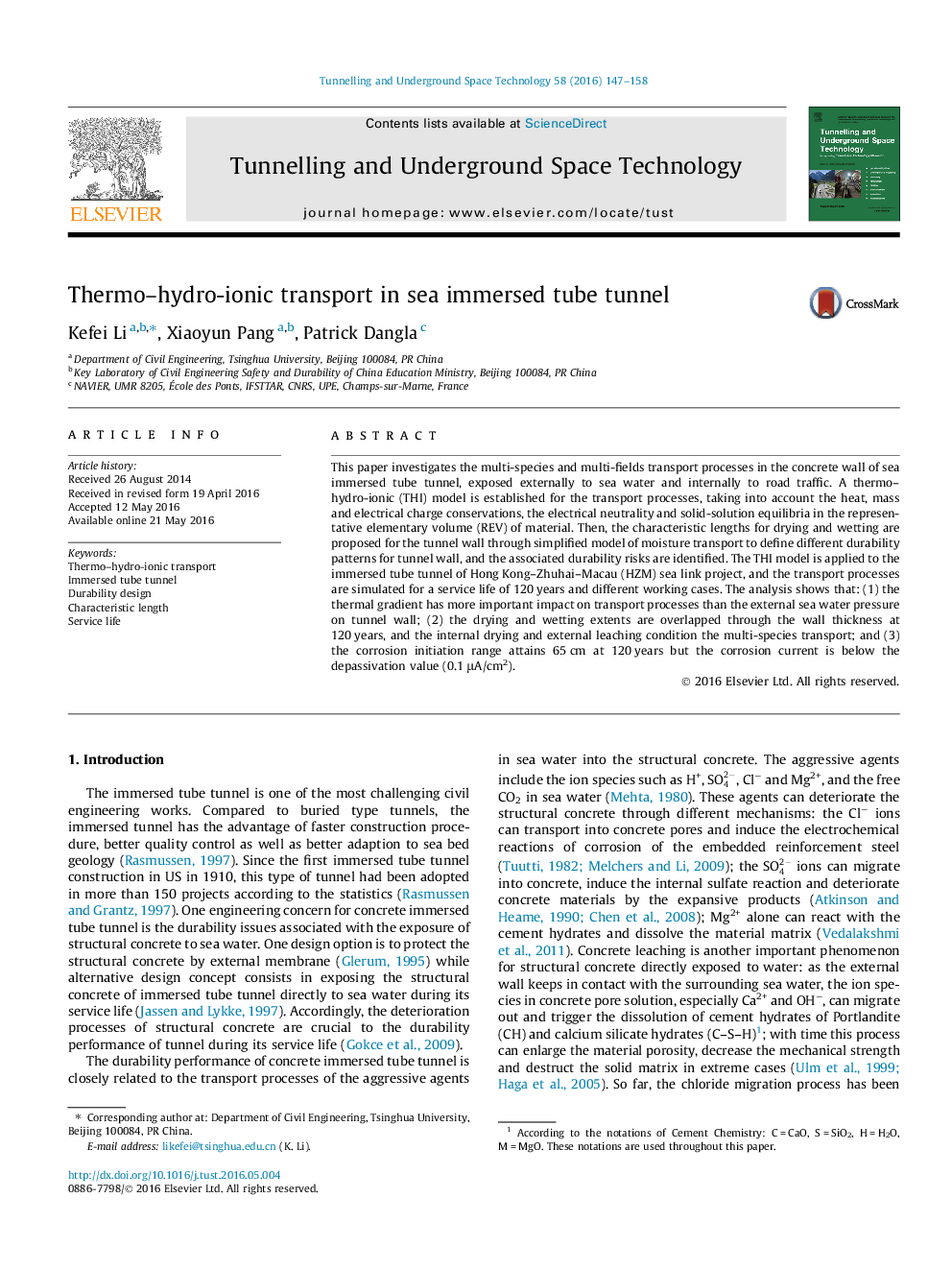| Article ID | Journal | Published Year | Pages | File Type |
|---|---|---|---|---|
| 311815 | Tunnelling and Underground Space Technology | 2016 | 12 Pages |
•Thermo–hydro-ionic model is established for tunnel wall exposed to sea water.•Drying and wetting extents determine the durability pattern of tunnel wall.•Transport processes are simulated for a tunnel wall for 120 years.•Internal drying and external leaching dominate the transport of ions.•Range of corrosion initiation reaches 65 cm but the corrosion current is low.
This paper investigates the multi-species and multi-fields transport processes in the concrete wall of sea immersed tube tunnel, exposed externally to sea water and internally to road traffic. A thermo–hydro-ionic (THI) model is established for the transport processes, taking into account the heat, mass and electrical charge conservations, the electrical neutrality and solid-solution equilibria in the representative elementary volume (REV) of material. Then, the characteristic lengths for drying and wetting are proposed for the tunnel wall through simplified model of moisture transport to define different durability patterns for tunnel wall, and the associated durability risks are identified. The THI model is applied to the immersed tube tunnel of Hong Kong–Zhuhai–Macau (HZM) sea link project, and the transport processes are simulated for a service life of 120 years and different working cases. The analysis shows that: (1) the thermal gradient has more important impact on transport processes than the external sea water pressure on tunnel wall; (2) the drying and wetting extents are overlapped through the wall thickness at 120 years, and the internal drying and external leaching condition the multi-species transport; and (3) the corrosion initiation range attains 65 cm at 120 years but the corrosion current is below the depassivation value (0.1 μμA/cm2).
